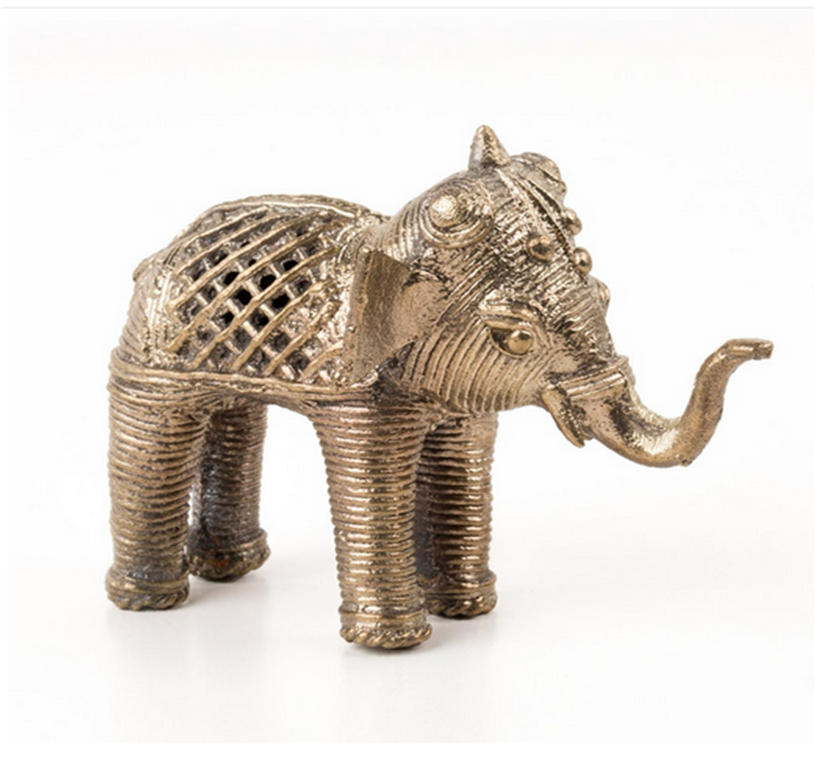Tambat Craft
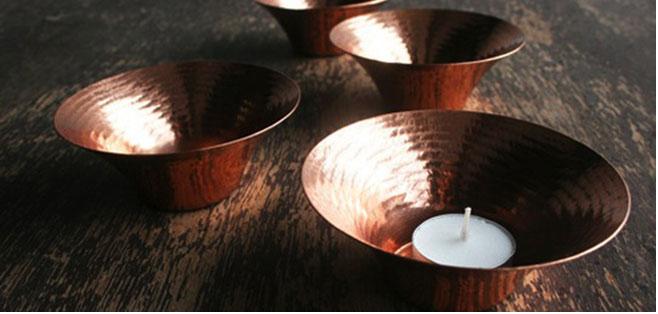
Tambat Craft of Pune
The legacy of the Tambat Craftspeople who handcraft Coppre’s products dates to the 17th century when they were invited to Pune by the Peshwas after Shivaji set up the city as the capital city of the Maratha Empire.
When the Tambat craftspeople migrated from Konkan to Pune, they formed their settlement in Kasba Peth, an already established nucleus of old Pune. Their precincts came to be known as Tambat Ali (Ali:precincts). These narrow and dusty alleys of Tambat Ali where the timeless sound of metal-hammers clang on copper, have remained pretty much the same as they were almost 300 years ago.
From making armour, coins, canons, copper utensils, ritual wares for the Peshwa rulers, the Craftspeople embraced the culinary and ritual needs of Maharashtrian communities and crafted traditional products such as utensils and puja items. Passed on through apprenticeship from one generation to the next, today the craft remains in the hands of a few craftspeople with even fewer willing to take on this heritage craft.
Tools and Raw Materials
Copper craft relies on a number of factors. The principal raw materials include copper and an alloy of copper. The traditional craft process uses manual shaping and beating. Each step has to be done by hand and takes a long time. The beauty of the art of beating is that it can vary from piece to piece and artisan to artisan. Skill comes into play to achieve the required density of indentations as well as the size and orientation.
Different tools such as chisels, hammers, clippers and tongs are used to mould and beat the metal and coerce a shape. Watching a coppersmith at work is spellbinding.
Typically, every Tambat family specialized in ‘a’ particular kind of object. This came about from the traditional system of handing down hereditary tools and know-how to the next generation in the family. And it just so happens that it was also a way to ensure equal distribution of work load and wealth creation. A norm that still exists in some form even today.
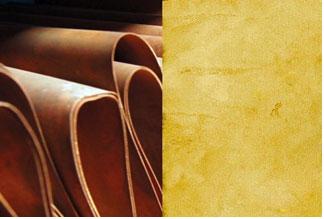
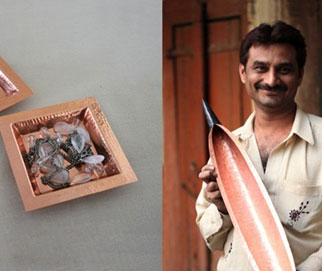
Bidriware
Making Process
‘Matharkaam’ or beaten work is the distinguishing feature of Tambat craft. The hand-beaten indentations, made by profiled beating hammers, strengthen the object and enhance the inherent rich surface by imparting a mirror-like appearance. It is a skill intensive craft and needs strength, dexterity and a keen hand-foot-eye coordination. It is the only skill that the community could save from the onslaught of mechanization with the coming of British rule, which to date has not leant itself to be mimicked on any machine.
Hit by changing traditions, rising copper prices on the commodity markets in recent years, the convenience offered by materials like stainless steel and plastic and the provocative economic opportunities outside the confines of their craft, has led to a near stagnation.
Yet some families of the community persevere with this craft of shaping objects from sheets of copper they carry on the ghadkaam (raising, sinking and shaping of the utensil), the crafting of ritual wares, nakshikaam (repousse and chasing); and the crafting of one-off temple objects.
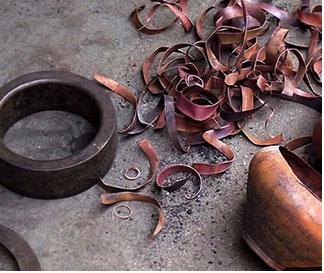
Products
This art of beaten copper metal brings in aesthetics as well as functionality. Traditional tambat (copper) products can vary from water containers, serve-ware to playthings for children.
Coppre, is an organization that is working with Tambat craftsmen to introduce contemporary designs of copper products that include lampshades, trays, coasters, floaters, candle holders, flatware, utility boxes etc.
Copper purifies water and has innumerable health benefits. So the water carafes made in copper are a perfect blend of the old and the new. The carafes bring together the age-old practice of drinking water stored in copperware (Tamrajal) in a beautiful design.
Ideating contemporary designs will make Tambat wares amicable to the now.
Considered an auspicious metal, handcrafted copper wares aptly reflect the spirit of a wedding. So to enrich a ceremonial wedding copper products are used as wedding gifts. These elegant and exclusive, handcrafted wares are sure to stand out and make a mark.
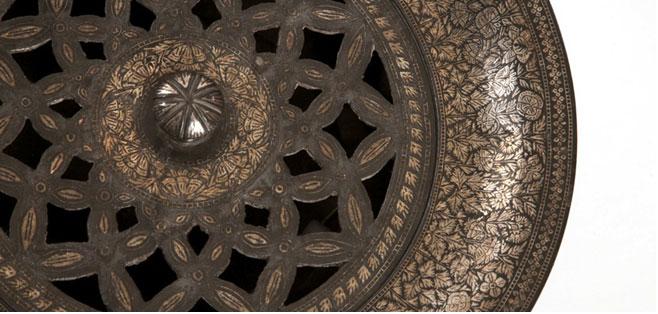
Bidriware of Karnataka
Bidri is an art of inlaying silver or gold on black metal. ‘Bidri craft’ is named after the place Bidar in Karnataka, from where it originated in India. The unique artwork was originally gifted by Persian artists. Skilled artisans from Persia were invited to Bidar by the Bahamani Sultans in the 14th century and trained local artisans in metal inlay work. Mughal and other local motifs are artistically etched and inlayed to create a range of vases, plates, hookahs and jewelry boxes.
Making Process
The technique of inlaying silver and gold on a black background involves four steps:
Melting the Alloy: Each Bidri piece is cast separately from ordinary soil made malleable with castor oil and resin. Processed 95% Zinc and 5% copper metal is melted. The molten metal alloy is poured in to the mould formed. The mould is allowed to cool and the object is removed.
Casting the Article: The article is then rubbed with copper sulphate solution to obtain temporary black coating on which the designs are etched.
Tools and Raw Materials
Different types of tools and raw materials are using in making bidriware objects:
Metals: Zinc and copper are important raw materials used in Bidri craft making.
File and Buffering Machine: Different types of buffing blades are used to smoothen the surface of the article.
Copper Sulphate: It is applied on the cast object to obtain temporary black coating on the article, so that it is easy to sketch the design over dark background.
Chisel: Used to engrave the design on the article.
Silver Wire: Used to engrave in the design grooves.
Brass Metal Wire: Brass metal wire is inlayed to enhance the outer appeal of the product.
Coconut Oil: Once the product is made, coconut oil is applied to deepen the black matt coating.
Bidri fort Mitti: Bidri fort mitti-clay is boiled and products are dipped in the mitti solution to obtain permanent black color.
Carving Tools: Carving tools such as chisel, hammer, filers, rasps are used while engraving and inlaying process

Chola Bronze Sculptures
Engraving and inlaying the design: The object is firmly fixed on a waxed stone to hold it in a way to engrave the designs on the article. The artisan uses small chisels to engrave the design. Pure silver is converted into fine flat wires and hammered or inlaid carefully into these chiseled grooves.
Oxidizing: In this stage a particular type of soil found in Bidar is mixed with ammonium chloride and water produces a very special solution. The solution darkens the body of product but has no effect on the inlayed silver wires. The article is then rinsed off in water leaving the silver shining against the black surface.
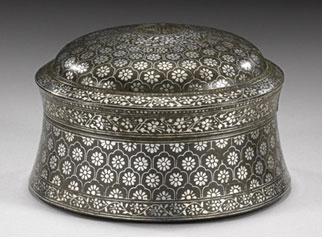

Products
Bidri ware is a unique traditional art form made with mixture of zinc and copper, which is magically turned into deep dark black color at the end of the process. Sophisticated design motifs are inlayed to create glittering white contrast over black background. The traditional Bidri products are symbol of royal life, aesthetically adorns living spaces.
Products such as hookah, shehnai – flower vase are created with Mughal motifs. Star motifs are used for surai-type of vase, ugaldaan, boxes, zalabchi, muqaba or round containers with dome-shaped lids, flower vases. Many animal motifs are used and include elephants, horses, peacocks, etc. Many Bidri themes are inspired by Mughal motifs presented in geometrical and flower patterns and have traditional names according to style of creation.
Fine wire inlaying method is called tarkashi and is done using silver wires. Flower and petal motifs are created with silver sheet and is called taihnishan. Mehatabi kaam is the reversal of surfaces where the design is cut out in sheet metal and is inlaid. Embossed design is called Munnavat kari. Verses from the Quran in Arabic script are also include in some themes.
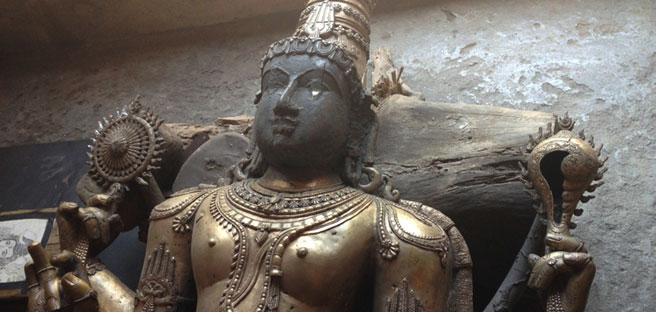
Chola Bronze Sculptures of TamilNadu
Thanjavur has been an art centre of great importance throughout almost the entire history of Tamil Nadu. Today, the town and its surrounding areas including Kumbakonam and Swamimalai are a flourishing centre for bronze sculpture, stonework and paintings. Each Hindu God sculpture is a one-of-a-kind piece, created by the artisans who have been perfecting the art of the lost wax method of bronze casting for generations. The subtle smiles and classic poses are sure to bring a sense of serenity to any meditation room, home altar or temple.
The earliest bronze statues in India were cast in the Indus Valley about 2300 BC, reaching an artistic peak during south India’s Chola Dynasty (9th to 13th centuries AD). The patronage of dynamic Chola rulers during this period sparked an unprecedented growth in philosophy, poetry, dance, temple architecture and fine art. The imperial Cholas utilized their prodigious wealth earned through their extensive conquests in building long-lasting stone temples and exquisite bronze sculptures.
These bronze sculptures show classic grace, grandeur and perfect taste. The best example of this can be seen in the form of Nataraja – the Divine Dancer.
Specialized metal works now take over, heating copper with a small proportion of lead and tin (and in earlier times, small amounts of gold and silver). This alloy is carefully poured into the clay mold, which has been heated to the temperature of the molten metal.
Step 5: After cooling for several days, the clay mold is broken open to reveal a rough version of the sculpture.
Step 6: The sculptors carefully chip away the clay and then smooth and polish the bronze, a process that can take anywhere from a few days to several weeks. During the Chola dynasty, only the barest minimum of finishing work, such as removing the channels of bronze connecting hand to torso, would have remained at this stage. Today, however, artists resort to an extensive amount of cold chiseling that gives a distinct, sharp finish to the details.
Tools and Machinery
Common tools used in the making process are:
. Tala – Used to determine the dimensions of the face of the image.
. Kartarimukha – A pair of scissors used to hold a weapon.
. Coal furnace- Used to produce the heat.
. Chisels- Used during finishing.
. Sand paper- Used to smoothen/ polish the surface of the metal image after revealing.

Making Process
The lost wax method being an age old technique that has been in existence since Chola Empire of the 12th century and still remains unchanged. The making process of Bronze Idols goes through the following steps:
Step 1: Sculptors mold images from hard beeswax mixed with a small amount of dammar (resin) from the shal tree. The wax is carefully molded into separate parts that comprise the sculpture and then lowered into a basin of cold water where it hardens instantly.
Step 2 : In order to join the individual pieces into a whole, they are returned to a malleable state through brief reheating. Simple tubular struts connect the hands of images to the body providing both stability to the wax model and channels through which molten bronze will be poured. While the wax is still soft, details, down to the individual beads of a sculpted necklace, are added with a sharp wooden chisel.
Step 3: The fully assembled wax model is then encased with several layers of clay.
Step 4: The heavily clay-encased mold is then baked in a fire pit, melting the wax, which runs out through the channels leaving a perfectly detailed, hollow clay mold.

Products
Large procession idols are made for temples as per orders from both India and abroad. Smaller pieces are made for prayer spaces at home and are also made for display as art pieces. Most sculptures are copies of those produced in the preceding centuries, especially the Chola era.
Bronze sculptures are an important milestone in the history of metal sculptures of India. As the Bronze sculptures are long lasting, they are created for eternity! The sculpture of Bronzes immensely radiates a sense of immortality and powerfully reflects the fascination and mystery about the ancient cultures of Buddhism, Jainism and Hinduism.
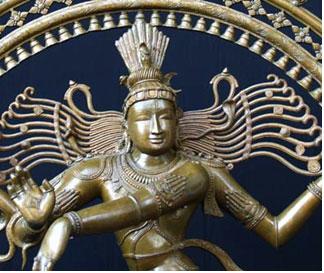
Dhokra Metal Casting

Dhokra Metal Casting: Tribal Art of Odisha
Dhokra metal Casting of Orissa is synonymous with the traditional craft of bell metal or brass. It is a typical tribal art form and practiced by tribal families. The dokhra metal casting craft is practiced in the districts of Puri, Dhenkanal, Nayagarh, Khurda, Keonjhar, Sambalpur, Mayurbhanj, Phulbani and Ganjam in Orissa. Lost wax technique is used to cast beautiful designs of lamps, boxes, tribal figures, animal figures and Gods and Goddess. The motifs are mostly inspired by the folk culture.
Contemporary artisans of this craft also make other utility items like door knob, door handle, ash-tray, butter box, pen holder, candle and incense stick stand, photo frame, tissue box and tissue box. Dhokra or metal ware is practiced by a large number of artisans. The practitioners belong to the Kansari caste. Dhokra metal casting of Orissa is practiced mainly by the ‘Sithulias’. Dhokra is an alloy of nickel, brass and zinc. When mixed in the right proportion gives an antique look and augments well with the interiors.
Making Process
A clay mixture of mud, cow dung and water of appropriate ratio is kneaded thoroughly for the required consistency. Using this mixture of clay a core model is made. Upon this model a pure form of clay is applied as a layer for the smooth finishing. This model is allowed to dry completely. By using lengthy wax threads the whole clay model is completely wrapped with it to form a layer and to obtain the selected pattern of design. On this coating of wax layer, a layer of clay with sand is applied. Usually sand is used here for the purpose of tightness in the mixture. Two channels like holes are made on it and allowed to dry. In these two channels, one channel is made to pour the molten metal hence the other channel is automatically used for releasing the air out. After the clay model is completely dried, a layer of sand mixed with minimal amount of clay is applied. Thus the clay-wax model is totally set ready to bake. The model is thoroughly baked in furnace and the wax in-between the layers of clay gets melted and remains as a hallow space between the layers of clay. Further this model is taken out from the furnace and through a channel molten metal is poured into it. This molten metal is initially obtained by melting the metal crucibles in a graphite container. While heating/melting these metal crucibles a bit of salt is added to obtain the pure form of molten metal which also enhances the further process.
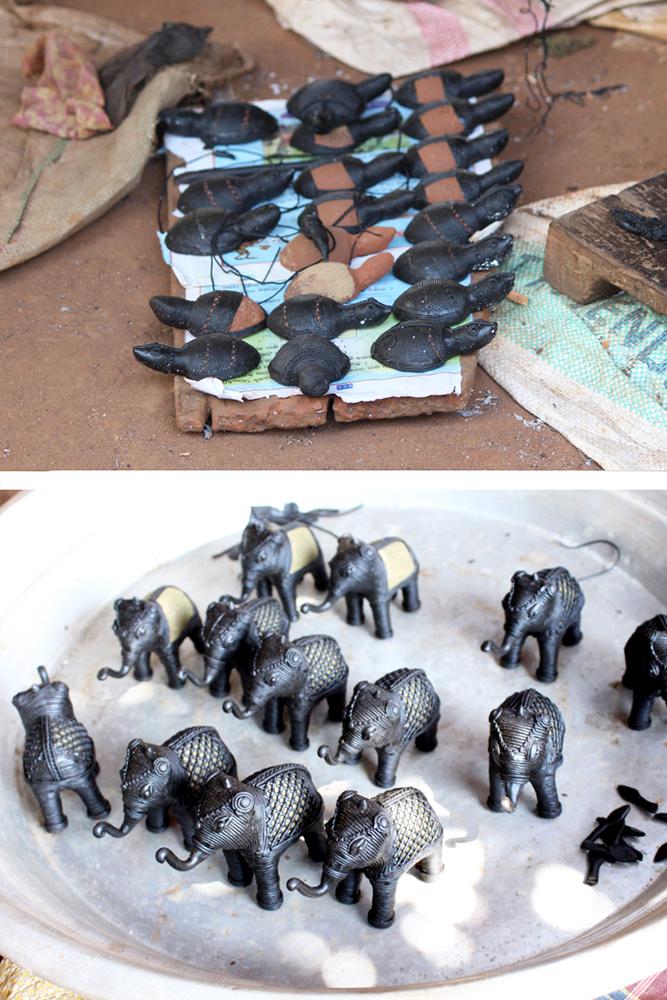
Raw Materials And Tools
The tools and raw materials used for Dhokra metal casting are as follows:
• Brass: It is the chief element that is used in Dhokra metal casting.
• Bees-Wax: It is the raw substance that is used for making preparing the wax threads.
• Clay Bees-Wax Threads: This is wound on the clay model.
• Coal: Coal is used in furnace to obtain high amount of heat.
• Furnace: To bake the clay model, furnace is used.
• Hammer: Clay mould is removed using hammer.
• Graphite Container: This container is used for melting the metal.
• Chisels: Chisels are used creating impressions.
• Water: It is mixed with mud and kneaded thoroughly to acquire necessary consistency.
• Mud: Mud is key ingredient used for making the model of the product.
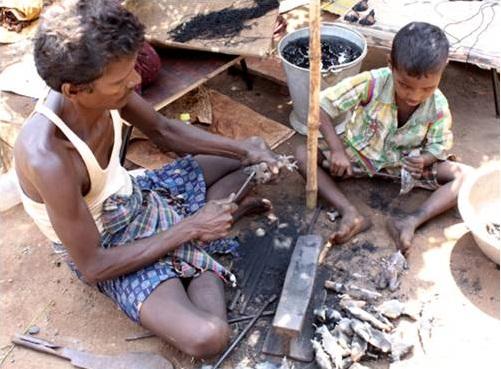
The molten metal poured into the clay mold acquires the shape and pattern of the model and acquires the impression of the wax model in fine details. This metal further gets hardened between the layers of upper and inner surfaces of the clay mould. Thus it is dipped in water to cool down the temperature of the metal. Once it is cooled completely then by slightly hammering and brushing the burnt mold, the metal artifact is thoroughly cleaned from both inside and outside. It is further polished all around and sold in market.
Products
The cost of the products depends on the workmanship it has undertaken in preparing it. It also varies in sizes and designs. As these products have an antique appearance it is used in many corporate offices as a showpiece and also used for house decorating purpose. Some of the products that are made using this special technique are: Gods and goddesses.
